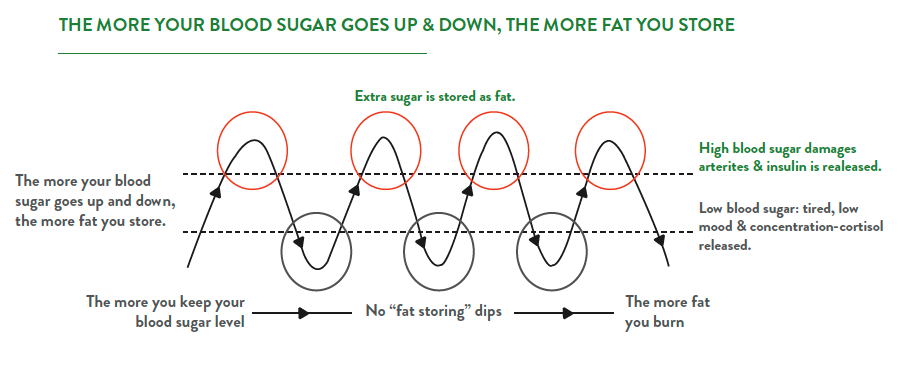Glycaemic Load (GL) is a measure that accounts for both the quantity and quality of carbohydrates in any given food. It reflects the effect different types of food have on our blood sugar levels. Maintaining stable blood sugar levels is crucial for effective weight management. Foods with a high GL rating tend to encourage the body to store fat, while those with a low GL rating promote fat burning.
The science behind a blood sugar-balancing diet is straightforward. Our bodies are designed to burn glucose for energy. Carbohydrates, such as grains (bread, pasta, rice) and fruits, are broken down into glucose. However, the modern Western diet often includes excessive amounts of the wrong types of carbohydrates, leading to an overabundance of blood glucose. This excess glucose is stored as fat, causing the body to crave more food to meet its energy needs. This cycle results in a loss of blood sugar control and inevitable weight gain.
When blood glucose levels are stable, you experience a steady energy supply and maintain a healthy, balanced appetite. This balance is crucial for achieving and maintaining an ideal weight. Conversely, when blood sugar levels spike too high, the body stores more fat; when they drop too low, you feel tired and lethargic. Thus, balancing blood sugar levels is critical to avoiding these pitfalls.
A significant portion of the population struggles with maintaining balanced blood sugar levels. Specifically, about 25% of all people, and 90% of those with weight problems, have difficulty in this area. The consequences are exhaustion and weight gain, which are just the beginning. Obese individuals are 77 times more likely to develop diabetes compared to their non-obese counterparts, illustrating the vital link between weight gain and blood sugar control. Therefore, the most effective way to lose weight is to regain control over blood sugar levels, which reactivates the body’s ability to burn fat efficiently. This approach allows for effortless weight loss without starvation while enhancing health and vitality.
Balancing blood sugar levels hinges on choosing foods with a low GL. You might be surprised at some foods with a high GL rating. For instance, cornflakes, a typical breakfast choice, have a very high GL rating, which can significantly impact blood sugar levels and contribute to weight gain if consumed regularly.
Practical Tips for Implementing a Low GL Diet
- Choose Whole Grains: Opt for whole grains such as oats, quinoa, and barley over refined grains like white bread and pasta. Whole grains have a lower GL and provide more sustained energy.
- Incorporate Plenty of Vegetables: Vegetables, especially non-starchy ones like leafy greens, peppers, and broccoli, typically have a low GL and are packed with essential nutrients.
- Fruits in Moderation: Some fruits are healthy, but some have higher GL values. Choose lower-GL fruits such as berries, apples, and pears, and consume higher-GL fruits like bananas and grapes in moderation.
- Healthy Proteins and Fats: Include sources of lean protein such as chicken, fish, and legumes, as well as healthy fats from avocados, nuts, and olive oil, which do not affect blood sugar levels.
- Be Mindful of Portions: Even low GL foods can contribute to weight gain if consumed in large quantities. Pay attention to portion sizes to maintain balance.
- Regular Meals and Snacks: Eating regular meals and healthy snacks can help keep your blood sugar levels stable throughout the day, preventing the peaks and troughs that lead to cravings and overeating.
Benefits Beyond Weight Loss
Following a low GL diet supports weight loss and contributes to overall health. It can reduce the risk of developing chronic conditions such as diabetes, heart disease, and metabolic syndrome. Maintaining steady blood sugar levels supports your body’s energy levels, reduces inflammation, and improves mental clarity and mood.
Conclusion
Understanding and utilizing the Glycaemic Load (GL) concept is powerful for weight loss and improved health. By choosing foods that stabilize blood sugar levels, you can encourage your body to burn fat more efficiently, enjoy sustained energy throughout the day, and reduce the risk of chronic diseases. Adopting a low GL diet involves making mindful food choices that support your body’s natural processes, leading to effortless weight management and enhanced overall well-being.
As part of our commitment to holistic health, Total Health Now Clinic offers free 30-minute consultations to explore how these natural remedies can support your well-being.











